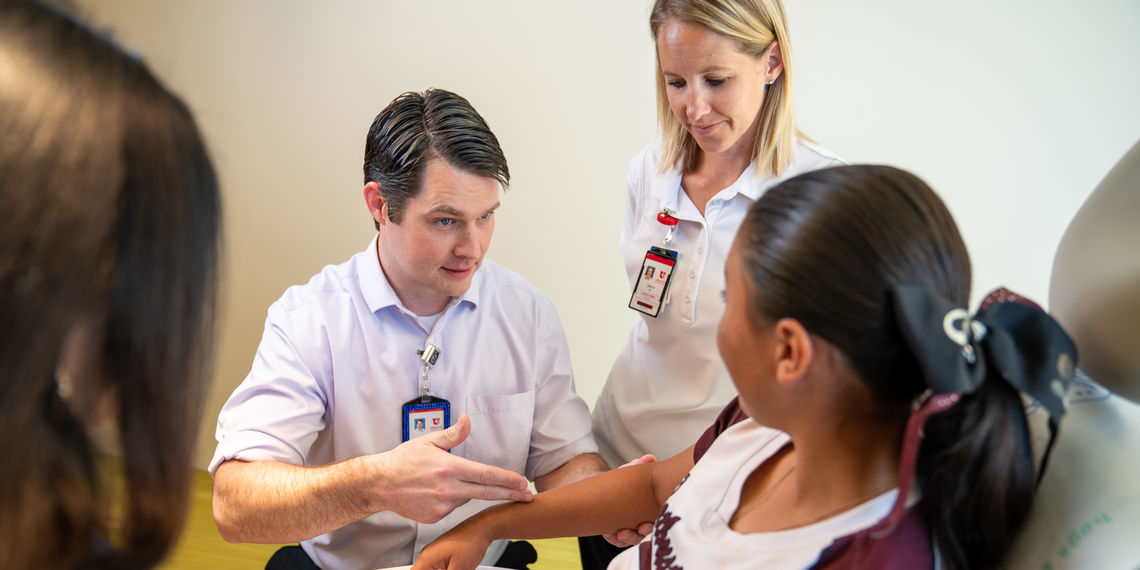Why "clear is kind" is the best guidance for patient education
edical language is often foreign to patients and their loved ones who have little experience in the health care system. In addition, health decisions typically come during times when people are upset or sick—using patient education that is actionable and easy to understand can make the experience better for families and their loved ones.
We need to step away from the mentality of not wanting to insult the intelligence of patients by “dumbing down” information. Instead, let’s flip that viewpoint to, "I'm making it accessible and clear. " As I like to say, “Clear is kind, and unclear is unkind.”
We can empower patients to make decisions about their health by integrating accessible, comprehensive, and personalized resources into their care plan.
4 strategies to build better patient education
1. Start with the patient education library
We often feel like we should curate our own education material and forget that we have access to entire libraries of prefabricated content housed within Epic. We can unload the burden of creating information by assigning these resources to patients in Epic, during appointments, or through MyChart. If the existing material truly doesn’t meet your patients’ needs, then you can always reach out to the Patient Education Steering Committee for guidance.
These resources often translate peer-reviewed journal articles or medical jargon into actionable advice for patients. Sometimes it can be hard to limit medical jargon—research shows that, even when asked to limit jargon, providers struggle to identify and self-regulate it in patient interactions. But overwhelming patients with medical jargon doesn’t give them peace of mind— it just adds to their stress.
2. Teach using the tool
The tool—whether it’s a pamphlet, handout, or video link—doesn’t do the teaching, we do. There are a few ways to quickly and effectively teach:
I give patients any printed materials upfront, along with a pen or highlighter. We talk through what’s important together. As soon as they put pen to paper, it's impactful to them. When they take the information home, they can look back at a particular section and say, "Oh yeah, I highlighted that. It must be important; I need to attend to this."
You can also apply the teach-back method to confirm that patients feel comfortable with their new learning and responsibilities. Make sure they know what their main problems are, what they need to do about them, and why it’s important for them to do that.
Keep it concise and limit your discussion to three significant topics. Check their comprehension by saying, “I want to make sure I did my job. Will you tell me everything you're taking away from today's visit?"
3. Remember the impact of anxiety
In health care, we often mistakenly conflate health literacy with education level. We assume that a person’s education level reflects their ability to understand health information. But even the most educated individuals struggle, because medical information is frequently unfamiliar and anxiety-inducing.
We forget that working in health care is just part of a routine to us. But for many of our patients, being in the hospital isn’t routine. Most people don't want to be here, even if it’s just for a follow-up appointment. It's incredibly stressful, and that anxiety can impact the memory and ability to process information.
4. Consider accessibility: language and cultural background
As we continue expansion into rural and underserved communities, we must guarantee that people of all backgrounds have equal access to patient education. For example, over 40 languages are spoken by our patients at Redwood Clinic. Our patient education material needs to reflect these diverse cultures.
Language and cultural barriers add another layer of complexity to patient education. Since some words don’t translate easily across languages, many providers don’t know whether to use word-for-word interpretation or contextualization. We can better serve diverse communities by providing digital or print material from the patient education library that has been translated into multiple languages, including 15 local dialects.
Keep in mind relying on family members for interpretation is not in compliance with U of U Health policy and places an unnecessary burden on them. Keeping explanations simple, providing printed materials, and utilizing appropriate interpreting resources is better practice.
Health literacy isn’t just about patient education – it’s about incorporating accessible, inclusive content into every aspect of patient care.
From the signs patients see as they walk through the door, to the language we use, and the materials we distribute, our focus must be on equity for all.
Darrin Doman
Pediatric hospitalists and patient advocates Reena Tam and Erin Avondet shed light on the untapped opportunity to augment pediatric vaccination coverage in our communities and build vaccine confidence in the inpatient setting. They provide a host of resources and practical tips you can apply right now.
In an organization as big as U of U Health, it’s hard to know where our work fits into the big picture. System Planning Manager Cassandra Taft highlights five ways teams can meaningfully contribute to Operational Plan priorities, regardless of job role or responsibility.
U of U Health's Patient and Family Advisory Council and Advise Utah recently gathered feedback from patients and caregivers on inpatient surveys and communication. Patient Experience's Corrie Harris, Marcie Hopkins, and Shayma Salih share insights from these advisory councils.
